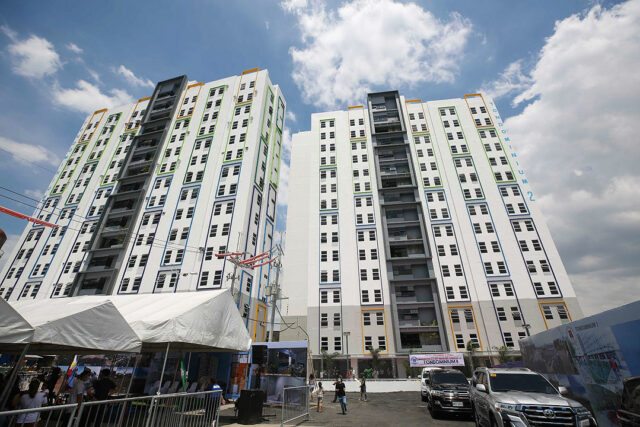Gov’t fully awards T-bills at mostly higher rates
THE GOVERNMENT made a full award of the Treasury bills (T-bills) it offered on Monday even as rates mostly rose as the market’s preference shifts to higher-yielding long tenors ahead of the Bangko Sentral ng Pilipinas’ (BSP) anticipated policy easing cycle.
The Bureau of the Treasury (BTr) raised P20 billion as planned from the T-bills it auctioned off on Monday as total bids reached P47.298 billion, or more than twice the amount on offer.
The demand was higher than the P35.99 billion in tenders seen at the July 29 T-bill auction.
Broken down, the BTr borrowed P6.5 billion as programmed from the 91-day T-bills as tenders for the tenor reached P12.791 billion. The three-month papers were quoted at an average rate of 5.828%, 4.9 basis points (bps) above the 5.779% recorded last week. Accepted rates ranged from 5.8% to 5.865%.
The government likewise made a full P6.5-billion award of the 182-day securities as bids for the tenor reached P12.11 billion. The average rate for the six-month T-bill stood at 6.062%, up by 4.8 bps from the 6.014% fetched last week, with accepted rates at 6.019% to 6.094%.
Lastly, the Treasury raised the planned P7 billion via the 364-day debt papers as demand totaled P22.397 billion. The average rate of the one-year debt decreased by 3.4 bps to 6.074% from the 6.108% quoted for the tenor last week, with the BTr only accepting bids with this yield.
At the secondary market before the auction, the 91-, 182-, and 364-day T-bills were quoted at 5.7871%, 6.0643%, and 6.1631%, respectively, based on PHP Bloomberg Valuation Service Reference Rates data provided by the Treasury.
“Rates were higher week on week because investors would like to lock in rates by buying longer tenors,” a trader said in a text message.
The preference for longer tenors is due to expectations that the BSP will implement its first rate cut in over three years as early as this month, the trader said.
The Philippine central bank can keep policy settings unchanged but can consider a rate cut if price pressures continue to ease, BSP Governor Eli M. Remolona, Jr. said on Monday, Reuters reported.
The balance of inflation risks has shifted to the downside and inflation expectations are well anchored, Mr. Remolona told legislators at a budget hearing.
“Evolving inflation conditions show the BSP can hold its policy settings steady for the time being,” Mr. Remolona said. “If price pressures continue to ease, it will be possible for BSP to consider a less restrictive monetary policy stance.”
The Monetary Board in July kept its policy rate at a 17-year high of 6.5% for a sixth straight meeting after raising interest rates by a cumulative 450 bps from May 2022 to October 2023.
Mr. Remolona earlier said the BSP may begin cutting rates at its Aug. 15 review — the only policy meeting scheduled in the third quarter — as they expect inflation to continue easing this semester.
The Monetary Board could reduce borrowing costs by 25 bps in the third quarter and by another 25 bps in the fourth quarter, he said.
T-bill rates mostly tracked the increase in secondary market yields last week ahead of the release of July inflation data, Rizal Commercial Banking Corp. Chief Economist Michael L. Ricafort added in a Viber message.
The Philippine Statistics Authority will release July inflation data on Tuesday (Aug. 6).
A BusinessWorld poll of 15 analysts yielded a median estimate of 4% for the July consumer price index (CPI). This matched the lower end of the BSP’s forecast for the month.
If realized, July inflation would be faster than 3.7% in June but slower than 4.7% a year earlier. It would also mark the eighth straight month that the CPI settled within the BSP’s 2-4% annual target.
“Some investors also opted to lock in funds for longer-term tenors before the possible US Federal Reserve and local policy rate cuts in the coming months,” Mr. Ricafort added.
Fed Chair Jerome H. Powell last week said interest rates could be cut as soon as September if the US economy follows its expected path, putting the central bank near the end of a more than two-year battle against inflation but square in the middle of the nation’s presidential election campaign, Reuters reported.
The Fed ended its latest two-day policy meeting with a decision to hold its benchmark interest rate steady in the 5.25%-5.5% range that was set a year ago, but its statement softened the description of inflation and said the risks to employment were now on a par with those of rising prices — neutral language that opens the door for rates to fall after more than two years of tightening credit.
Mr. Powell pushed the message even further forward in his post-meeting press conference, noting that price pressures were now easing broadly in the economy — what he called “quality” disinflation — and that if coming data evolve as anticipated, support for cutting rates will grow.
Investors saw Mr. Powell’s comments as clearly setting the stage for a reduction in borrowing costs at the Fed’s Sept. 17-18 meeting.
On Tuesday, the BTr will offer P30 billion in reissued seven-year Treasury bonds (T-bonds) with a remaining life of four years and nine months.
The Treasury wants to raise P220 billion from the domestic market this month, or P80 billion through T-bills and P140 billion via T-bonds.
The government borrows from local and foreign sources to help fund its budget deficit, which is capped at P1.48 trillion or 5.6% of gross domestic product for this year. — A.M.C. Sy with Reuters














